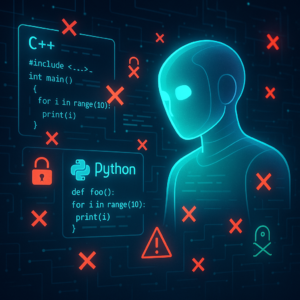Untangling AI’s Political Leanings: How GPT-4 Measures Up Against GPT-3.5

Untangling AI’s Political Leanings: How GPT-4 Measures Up Against GPT-3.5
Artificial intelligence is reshaping the world and, with it, our conversations about technology and society. At the heart of these discussions is the push to make AI more neutral and unbiased. But how do we gauge biases in AI, especially when it comes from a model as influential as OpenAI’s ChatGPT? Recently, researchers Erik Weber, Jérôme Rutinowski, Niklas Jost, and Markus Pauly have taken on this challenge by studying the political biases of OpenAI’s latest model, GPT-4, in comparison with its predecessor, GPT-3.5. Buckle up as we dive into their findings and explore whether we’re moving toward unbiased AI—or not.
ChatGPT’s Political and Personality Tests: An Overview
Before delving into the results, let’s simplify what’s been put to the test. The researchers embarked on a meticulous study to unearth the possible political biases and personality traits displayed by ChatGPT models. They employed two key tools: the Political Compass Test and the Big Five Personality Test. These tests were run 100 times, ensuring a significant sample size for solid conclusions.
Political Compass Test
The Political Compass Test positions responses on two axes: the economic axis (left-right) and the social axis (authoritarian-libertarian). The goal? Pinpoint the political alignment of the AI models and test their ability to mimic political viewpoints spanning libertarian-left to authoritarian-right.
Big Five Personality Traits
The Big Five Personality Test dives into five personality dimensions: Openness, Conscientiousness, Extraversion, Agreeableness, and Neuroticism. Applying these human-oriented tests to AI reveals potential personality biases related to political leanings.
Hypotheses on AI Bias: Crunching the Numbers
The exploratory study set out to achieve a few key objectives: 1. Detect Bias: Is there a detectable political bias within ChatGPT’s responses? 2. Model Comparisons: Are there differences in biases between GPT-3.5 and GPT-4? 3. Human-Psychological Correlations: Do the AI’s biases and personality traits mirror findings in human psychological studies?
Findings on Political Bias
In finding the political “swagger” of these AI models, the tests revealed that both GPT-3.5 and GPT-4 lean libertarian-left. That means they tend to tilt towards individual freedoms with a slight leftist economic bent. Interesting enough, GPT-4 showed a slightly less pronounced bias compared to GPT-3.5, suggesting minor improvements have been made. However, let’s not break out the confetti yet—the difference was statistically negligible.
Testing AI’s Political Adaptability
An intriguing aspect of AI like GPT is its potential to emulate specific political perspectives when prompted. On cue, GPT-4 excelled, accurately emulating all four quadrants of the Political Compass, from libertarian-left to authoritarian-right. GPT-3.5, however, stumbled, especially in differentiating between libertarian and authoritarian roles.
Personality Article
Both versions of GPT exhibited high Openness and Agreeableness, which correlate with progressive views in humans. While GPT-4 expressed less exaggerated traits compared to GPT-3.5, it showed a noticeably higher Neuroticism level—a factor that remains to be fully understood in the realm of AI behavior.
Implications for Real-World Applications
Given these findings, let’s ponder what this means when we interact with AI like ChatGPT. If you’re using ChatGPT in classrooms, newsrooms, or even customer service, these biases could color the interactions. While AI can offer a semblance of neutrality, its subtle leanings may influence its responses or advice, shaping perceptions inadvertently.
Key Takeaways
Here’s a quick and spicy summary of what we learned:
-
Bias is Still Present: Both GPT models display a subtle libertarian-left bias. While GPT-4 improves slightly over GPT-3.5, the difference isn’t groundbreaking.
-
GPT-4 Adapts Better: GPT-4 demonstrates enhanced adaptability in emulating various political viewpoints compared to GPT-3.5.
-
Personality Traits and Politics: High levels of Openness and Agreeableness in GPT-3.5 and GPT-4 mirror progressive political views observed in human personality studies.
-
Impacts on Interaction: These biases hold implications for the perceived neutrality and trustworthiness of AI in politically or educationally sensitive contexts.
In unraveling the complexities of AI’s political biases, we gain a deeper understanding of the challenges that lie ahead. As AI continues to evolve, ongoing research and open dialogues will be key in bridging the gap towards truly neutral AI platforms. Meanwhile, being aware of these biases allows us to approach AI-driven tools with informed curiosity rather than blind trust.
As AI technology steers us into uncharted territories, keeping an eye on the compass—political or otherwise—remains crucial.
Happy exploring, fellow AI adventurers!
If you are looking to improve your prompting skills and haven’t already, check out our free Advanced Prompt Engineering course.
This blog post is based on the research article “Is GPT-4 Less Politically Biased than GPT-3.5? A Renewed Investigation of ChatGPT’s Political Biases” by Authors: Erik Weber, Jérôme Rutinowski, Niklas Jost, Markus Pauly. You can find the original article here.




